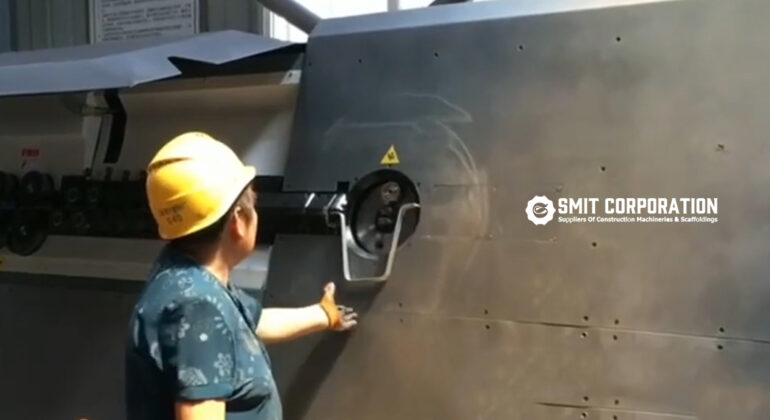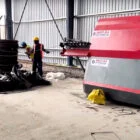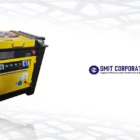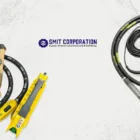Reinforced concrete is essential in the building sector as it offers the structural stability required for bridges, buildings, and different infrastructures. A rebar (reinforcing bar) is a fundamental part of reinforced concrete and has to be precisely formed and placed. Although bending rebar used to require labor, technological developments have brought creative ideas such as multi-head rebar benders. On building sites, these high-efficiency bending tools are revolutionizing reinforcing operations, thereby enhancing accuracy, safety, and general output.
The Role of Rebar Bending Machines
Modern building tools and equipment depend much on rebar bending machines, especially multi-head versions. Multi-head benders can treat numerous pieces of rebar concurrently, unlike hand techniques, which are sometimes time-consuming and prone to human mistakes. This capacity guarantees uniformity in the bending process, which is essential considering the requirements specified in a Bar Bending Schedule (BBS) and improves efficiency.
These devices enable faster project turnarounds by significantly cutting the time needed for rebar manufacturing. A multi-head bender, for instance, can do many 90-degree bends in a few minutes—a task that may take much more time done manually. These time savings directly translate into lower labor expenses and the capacity to devote resources to other critical on-site tasks.
High-Efficiency Bending Tools
Among the most efficient bending instruments available are multi-head rebar benders. These machines are flexible and suitable for an extensive range of building projects, as they allow one to bend different rebar sizes and types. Multi-head benders may be designed to fit particular needs with amazing speed and precision, no matter whether the work calls for ordinary bends or more complicated designs, including hooks and spirals.
By automating the bending process, workers are less engaged in physical labor, which lowers the possibility of accidents related to repeated activities. This move towards mechanization depends on improving workplace safety, which frees qualified workers to concentrate on more complex parts of buildings requiring human supervision.
Precision Rebar Fabrication
The foundation of effective reinforcement is accuracy. Bent rebar incorrectly may lead to structural problems, therefore compromising the integrity of the whole structure. Designed to offer regular and exact bends, multi-head rebar benders help to reduce the danger of mistakes often resulting from hand bending.
These devices usually include computerized controls that let users enter precise bend criteria. This method provides the exact shaping of every rebar component according to architectural and technical specifications. Following BBS guidelines will help contractors maintain high quality and save expensive rework.
Furthermore, the use of multi-head benders lets one make rapid corrections should design modifications occur during construction. In today’s fast-paced building scene, when project needs can shift quickly, this adaptability is essential—the flexibility to change bending criteria without central downtime guarantees that projects stay on time.
Heavy-Duty Rebar Bending Solutions
Built to meet the exacting standards of building sites, multi-head rebar benders are heavy-duty rebar bending solutions. These machines are built to manage different rebar sizes—from thin diameters to larger bars—without compromising performance. Large-scale projects requiring great reinforcement especially benefit from their durability.
Moreover, many modern multi-head benders have safety and usability enhancement devices. Some types, for example, have automatic feeding systems, which reduce the need for careful handling of large objects. This innovation not only simplifies the bending process but also reduces the possibility of mishaps connected to lifting and rebar placement.
These machines’ heavy-duty character guarantees their constant performance even under a large volume of work. Investing in solid rebar bending solutions could help contractors in the long run by lowering maintenance costs and improving operating efficiency.
ROI and Cost-effectiveness
Although the initial outlay in multi-head rebar benders might be significant, the long-term return on investment (ROI) could be very high. Through better precision and efficiency in rebar construction, contractors may save labor costs and accelerate project schedules. This effectiveness helps businesses to take on more initiatives, hence improving profitability.
Moreover, the accuracy these machines provide helps to reduce material waste. Correct bending guarantees efficient resource use by lowering the possibility of generating useless rebar. Not only is this efficiency affordable, but it also fits sustainable building methods, where waste reduction is becoming increasingly crucial.
Last Thought
Finally, multi-head rebar benders offer several benefits that improve efficiency, accuracy, and safety, reflecting a significant development in contemporary reinforcing operations. These highly efficient bending tools simplify rebar manufacturing and are essential parts of building tools and equipment so that contractors can finish jobs faster and with more accuracy. On job sites, they not only raise the caliber of work but also help to create safer and more efficient surroundings. Achieving excellence in reinforcing work depends on the integration of sophisticated instruments like multi-head rebar benders as the construction sector develops. Therefore, they influence the direction of building methods and promote innovation ahead.










